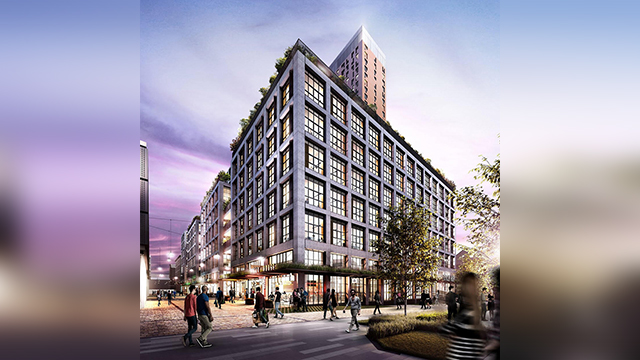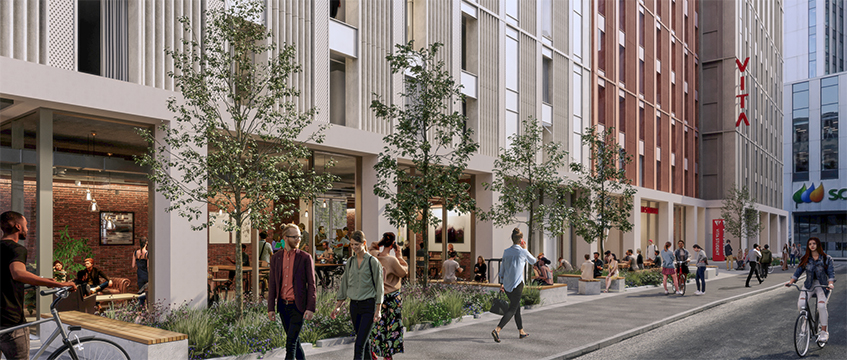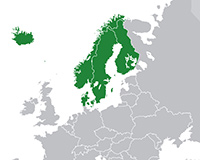Under its cosy exterior lies a well-drilled business region, and Scandinavian countries can offer safe, low-risk returns in increasingly turbulent times.
Over the last 18 months, the world has fallen head over cable-knit-sock-clad heels in love with the Nordics, wooed by a lifestyle consisting mainly of oversized jumpers, open fires and piles of blankets in varying shades of cream.
But while there are plenty of reasons to be looking to our Scandi neighbours for sanctuary right now, none of them involve retreating to a candlelit cabin.
Under its cosy exterior lies a well-drilled business region, and Scandinavian countries can offer safe, low-risk returns in increasingly turbulent times.
Over the last 18 months, the world has fallen head over cable-knit-sock-clad heels in love with the Nordics, wooed by a lifestyle consisting mainly of oversized jumpers, open fires and piles of blankets in varying shades of cream.
But while there are plenty of reasons to be looking to our Scandi neighbours for sanctuary right now, none of them involve retreating to a candlelit cabin.
In an increasingly uncertain world, the Nordics can offer something far more comforting than hygge: economic and social stability. A network of financially independent, successful powerhouses are not built on Instagram shots of fingerless gloves. This is where the decidedly non-snug elements of the Nordic way come into play – like the fact there is no usable word for “please” in the Norwegian language, or that tact as a concept is not openly recognised and the locals do not believe in even the lightest of sugar coatings.
The Scandinavians are direct when it comes to business deals and negotiations. They say what they mean and they mean what they say. And it is this straightforward transparency that has stood them in such good stead.
It also makes them an attractive investment opportunity. “We are very open,” says Agneta Jacobsson, head of Sweden and the Nordics at Cushman & Wakefield. “It is very clear and simple when it comes to buying property here.”
The figures are pretty clear too. Transactions in Nordic commercial real estate hit a record €43bn (£37bn) in 2016, up 8% on 2015, according to local corporate finance advisory firm Pangea Property Partners. And last year prime office CBD yield was 3.75% in Stockholm, Sweden, 3.8% in Oslo, Norway, and 4.2% in Helsinki, Finland, according to Savills.
The opportunities extend into sectors beyond offices. In October 2015 Meyer Bergman spent €554m on 11 prime retail properties in Oslo, citing a lack of luxury retail offer in such a wealthy and fast-growing city as a huge potential growth area.
The Swedish logistics market is also booming, with 5m sq ft of new industrial, warehouse and logistics space developed in 2016 and similar volumes expected over the next 12 months.
Prices in the Nordics aren’t rock bottom and no one should expect to pick up a cut-price bargain. But for anyone happy to pay a premium on doing business in a safe haven with a transparent market, they could do much worse. They may just find the ultimate Brexit-proof, even Trump-proof, sanctuary. The trick is knowing where to invest for the strongest returns.
Here is a guide to the top five Nordic cities to be eyeing in 2017.
Stockholm
Clean, fresh and simple, Stockholm is the epitome of understated cool. Laid back but efficient, the city has a Baltic, utilitarian charm that is straightforward almost to the point of indifference. But far from being unpleasant, the local penchant to err on the side of aloof only adds to its appeal.
It also happens to be one of the strongest performing cities in Scandinavia, both in terms of its overall economy and property market specifically. There are big opportunities in the residential sector as more than €36bn worth of new home construction started in Stockholm in 2016, and the plan is to add 140,000 new homes to the city by 2030.
On the retail side the city is expected to see sales increase by 2.6% year on year until 2021. Its existing 15m sq ft of shopping centre stock is set to grow by 2.3% in 2017 and again in 2018.
Stockholm has a particularly strong office market due to short supply and strong demand. Rents in the city’s CBD rose by 18% in 2016 and look set to rise again by 6% this year, according to research by Standard Life.
But C&W’s Jacobsson warns that competition is fierce: “Retail and offices are the two most exciting opportunities in Stockholm now. But there is a lot of local competition as interest rates are practically zero. So the institutions and pension funds in Sweden have been fighting for the deals. There is a lot of international interest in Stockholm but you have to be ready to fight for the best stock.”
Gothenburg
All the benefits of the easy to navigate Swedish property market without the Stockholm price tag.
Rents in this creative, chilled-out city on the country’s west coast are around half those in the capital – €303 per sq m compared with €616 per sq m. Prime office yields in Sweden’s second city are around 4%.
The city has two universities, fuelling a young, vibrant population. And, according to Jacobsson, now is the time to make a move.
“For a long time Gothenburg has been quite a closed market,” she says. “There was a lot of family-owned property tied up off the market. But that has changed over the last 18 months. The market has opened right up, family companies are selling off stock because they realise the city needs investment from outside the Gothenburg region. And there are huge expansion plans for the city, which will see a lot of new stock coming on line.”
Oslo
Once considered the “wealthy weirdo” of Europe, and one of the richest countries in the world, Norway has long been averse to embracing foreign investment. But it is now open for business.
“10 years ago, Norwegian real estate was very local,” says Stig Bech, partner at Oslo-based law firm BA-HR. “But that has changed in the last five years as we have realised international investment makes us more robust.”
[caption id="attachment_862233" align="aligncenter" width="1024"] The Barcode project, Oslo[/caption]
Major new schemes such as the 2.2m sq ft waterside Barcode project have opened the floodgates to a new style of high-end, modern architecture and, with it, new international occupiers including PwC and Deloitte. Office rents are set to grow in 2017, according to a report by CBRE, with submarkets on the city fringe outperforming the CBD seeing uplifts of up to 6% compared to just 2% in the city centre.
The city also has major regeneration plans to build 147,000 new homes over the next two decades and the industrial and logistics market remains strong with a 5.5% yield thanks to increased demand for warehouses by online retailers.
On the retail side it is all about high street performance thanks to low stock – particularly on the luxury retail side, which is effectively made up of one 90m parade of shops in central Oslo. Shopping centre performance is set to be subdued in 2017, with just 3% growth predicted by CBRE.
Stavanger
The main hub for Norway’s oil industry, it doesn’t take a genius to work out that plummeting commodities prices have had some serious implications for the city.
The office market has suffered more in Stavanger than anywhere else in Norway after thousands of people working in the oil industry lost their jobs. Resulting low demand for office space has seen vacancy rates rise by around 3% year on year. New construction activity has slowed to around 248,000 sq ft of new space a year and rents fell by an average of 10% between 2015 and 2016.
It is obviously a riskier play than buying in a strong performing city like Oslo, but for those who are put off by high Nordic prices and can wait for a return on their investment, this fjord-side city is well worth a look.
“Stavanger could end up being a bit like Ireland,” says John Solberg, managing director of property agent CBRE in Norway. “When the market recovers it will come back fast and, like with Ireland, everyone will wish they had invested or bought property when the prices were low. Everyone is worried now because of the oil but the city will survive and when it comes back it will come back fast. Now is the time people will be able to find good deals.”
Helsinki
One of the top nine cities in the world to live according to the Economist Intelligence Unit, Helsinki is known for its leading healthcare and education provision, a strong cultural offering and well-oiled infrastructure.
Property transaction volumes hit €5.9bn in the first nine months of 2016, 30% up on the same period in 2015. International investors made up around 25% of that volume. Residential was the most active sector and made up 40% of the total volume followed by retail at 27% and offices at 19%.
The city is expecting an influx of around 40,000 new residents between now and 2021 and Finland is actively looking to urge overseas buyers to invest.
Where next for European investment?
David Hutchings, Head of EMEA Investment Strategy, Cushman & Wakefield
Looking at the investment prospects for the European commercial property market for the year ahead, there are some consistent themes underpinned by geographical opportunities in regions such as the Nordics which will shape strategy and define portfolios.
The headline is that risk and volatility, driven by the macro-economic and political factors, remain a constant companion for any investor.
Despite this, real estate continues to be highly attractive overall particularly for the best assets in the right locations and certainly when compared to other alternatives such as bond yields.
The uncertain uncertainties of last year – the UK’s EU referendum and Donald Trump’s ascendancy to US president – have morphed to slightly more certain uncertainties, albeit with the longer-term impact still to be seen.
Further potential political fallout from elections in France and Germany could additionally complicate the environment. However, we don’t expect the unknowns to stall investment activity as unstable operating environments have become the new normal for many.
From a demand perspective, occupiers will seek property that adds worth to their business and hence market value is where the occupier sees it.
While modest economic expansion and an increasing shortage of supply point to real rental growth, it won’t be evenly spread across sectors or cities. Successful investors will take note, both following the occupier and adding value by creating affordable, effective space.
We can expect to see more Middle Eastern and Asian investment flowing towards Europe as US counterparts wait to see what president Trump’s policies mean for domestic growth and attitudes towards foreign investment.
It is our expectation, that Asia will in fact overtake North America as the chief source of capital flowing into Europe in 2017, although Europeans themselves will rival this, crossing more borders regionally as they seek out the best mix of growth and stability.
Opportunities ultimately depend on the risk attitudes of buyers, and with the two most cited international ‘go to’ markets, the US and UK, having made changes to the status quo in 2016, uncertainty will clearly drive some changes in target markets, with Germany a chief beneficiary in Europe, followed by the Nordics and France.
The Nordics in particular remain a safe haven target for investment capital. This will continue, and they should be first on the list for many investment portfolios. These countries offer a balance between growth and low risk which is almost unrivalled elsewhere.
The nearest investment competitors to Stockholm and Copenhagen would
be Madrid and Barcelona. These, though, are driven more by a recovery from a stressed position rather than long-term growth coming from population increases and other positive factors.
The only factor against the Nordics is their size and potential liquidity. In terms of institutional or business quality and forward-looking indicators such as quality of life, these countries tick all the boxes. With such attractive elements, there could of course be a big queue of buyers coming in, resulting in a very competitive market for stock.
With growth patterns increasingly differentiated, overall we believe 2017 will be a year of tiers as some investors, and indeed occupiers, focus on tier 1 gateway cities but others look to tier 2 markets, typically with an aversion to macro risk making them focus on the better-managed and more-stable economies.











